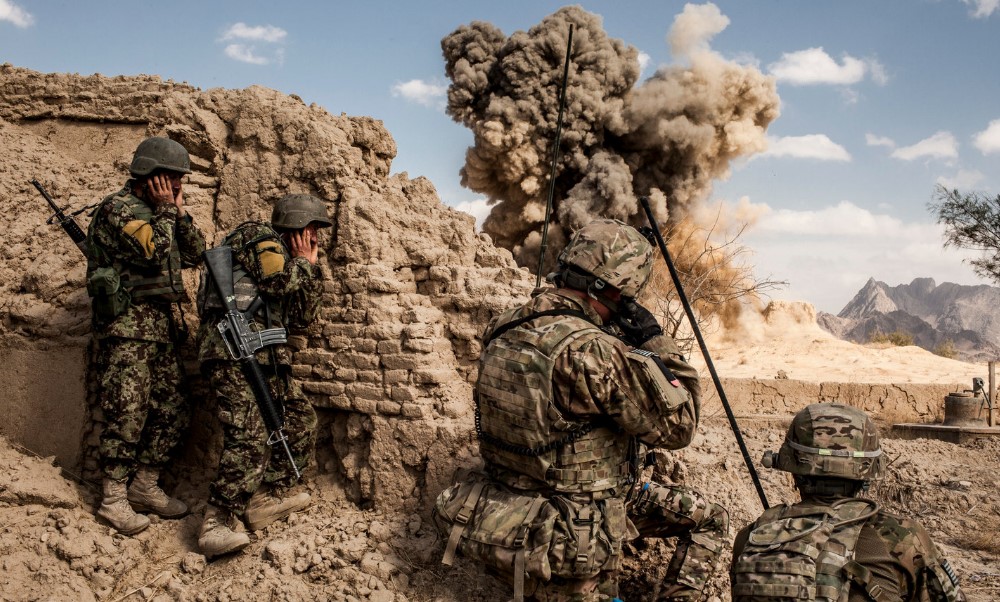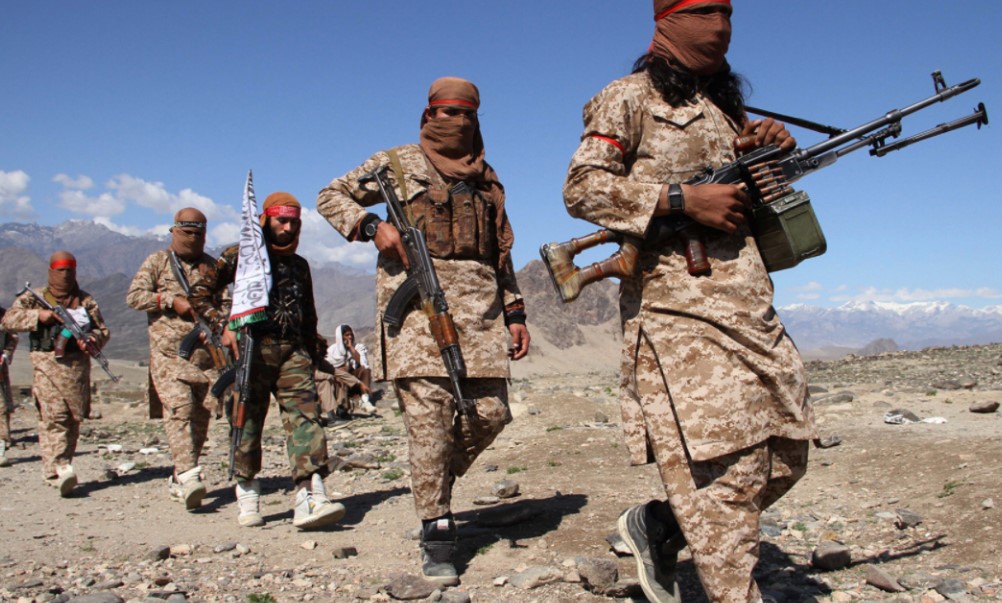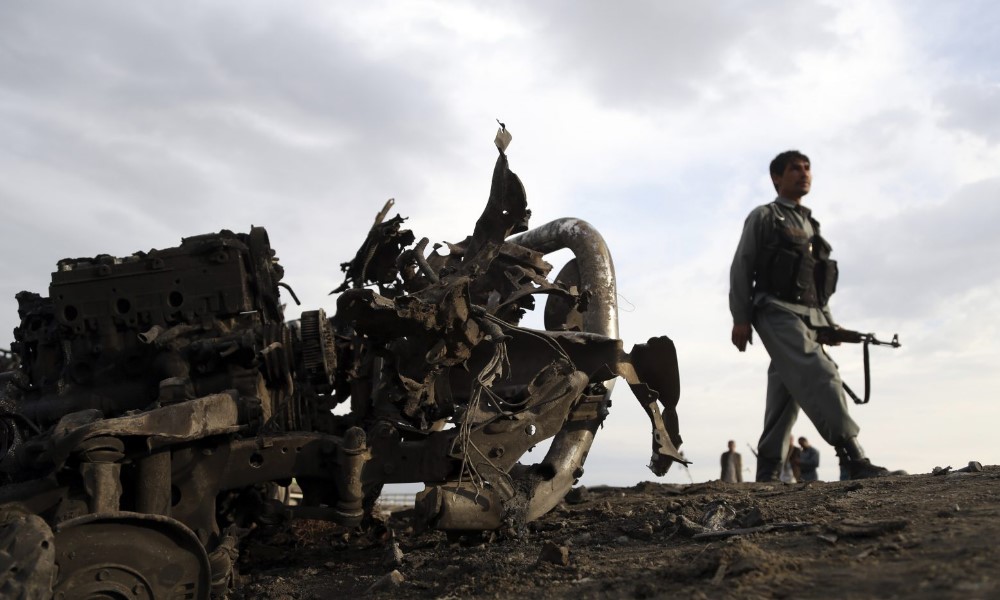The War in Afghanistan, which lasted from 2001 to 2021, is recognized as the longest-running war in U.S. history and one of the most impactful conflicts in recent decades. This war, primarily between the United States and the Taliban, has left an indelible mark on global politics, security, and the lives of millions of people. In this article, we will dive into some of the most significant facts about the History of War in Afghanistan.
Key Facts About the History of War in Afghanistan

The War in Afghanistan was triggered by the September 11, 2001, terrorist attacks on the United States, which were carried out by al-Qaeda, a militant group that had been harbored by the Taliban regime in Afghanistan.
The U.S., with support from NATO allies, launched military operations to dismantle the Taliban, eliminate al-Qaeda, and establish a stable government in Afghanistan.
However, the conflict became protracted, with many ups and downs over two decades. Here are some of the key facts:
- Start and End Dates: The war began on October 7, 2001, and officially ended on August 31, 2021, when the last U.S. troops were withdrawn.
- Objective of the U.S. Invasion: The initial goal was to dismantle the Taliban regime, destroy al-Qaeda’s presence, and capture Osama bin Laden, the mastermind of the 9/11 attacks. However, the conflict soon evolved into a broader attempt to rebuild Afghanistan and prevent the resurgence of extremist groups.
- Impact on Afghan Civilians: Millions of Afghan civilians were directly affected by the war. According to estimates, over 71,000 Afghan civilians were killed as a result of the conflict, with millions more displaced.
- Human Cost: Over 240,000 people lost their lives due to the war, including U.S. military personnel, Afghan security forces, insurgents, and civilians. The war also led to widespread mental health issues, with many soldiers and civilians suffering from post-traumatic stress disorder (PTSD).
- Economic Cost: The financial burden of the war was immense. The U.S. spent over $2 trillion on the war, making it one of the most expensive military operations in history.
- The Taliban’s Return to Power: Despite the prolonged military efforts, the Taliban regained control of Afghanistan in August 2021, following the withdrawal of U.S. and NATO forces, leading to widespread concerns about human rights, especially for women and minority groups in Afghanistan.
Given the complexity and depth of the War in Afghanistan, there are several educational tools and resources that offer deeper insight into the conflict. Whether you are a student, historian, or general reader, these products will help you understand the war’s full scope.
Causes of War Conflict in Afghanistan

The conflict in Afghanistan has deep and complex roots, influenced by a mix of historical, political, and social factors. Several key causes have contributed to the prolonged war in Afghanistan, with both internal and external forces playing significant roles.
1. Soviet Invasion (1979)
The modern conflict in Afghanistan can be traced back to the Soviet invasion in 1979. The Soviet Union intervened to support the communist government of Afghanistan, which was struggling against internal rebellion. This intervention led to a decade-long war between Soviet forces and Afghan mujahideen fighters, who were supported by the United States and other nations. The Soviet withdrawal in 1989 left a power vacuum that eventually resulted in a civil war.
2. Rise of the Taliban
After the Soviet withdrawal, Afghanistan was plunged into civil war as various mujahideen factions fought for control. In the mid-1990s, the Taliban, a militant Islamist group, rose to power by promising stability and enforcing strict Islamic law. By 1996, the Taliban had taken control of Kabul and much of the country, imposing a harsh regime that suppressed women’s rights and aligned with terrorist groups like al-Qaeda.
3. 9/11 Attacks and U.S. Invasion (2001)
The most immediate cause of the modern conflict in Afghanistan was the terrorist attacks of September 11, 2001, carried out by al-Qaeda, which had found refuge in Taliban-controlled Afghanistan. In response, the United States, supported by NATO allies, launched a military campaign to dismantle the Taliban regime and eliminate al-Qaeda’s presence. This invasion marked the beginning of the 20-year-long U.S.-led war in Afghanistan.
4. Ongoing Insurgency
Despite the removal of the Taliban from power, the group maintained a significant presence in rural areas, continuing to wage an insurgency against the Afghan government and coalition forces. The Taliban’s resurgence, along with corruption in the Afghan government and external interference, prolonged the conflict for decades, making it one of the longest wars in modern history.
Top Resources for Exploring the War in Afghanistan

1. “The Afghanistan Papers: A Secret History of the War” by Craig Whitlock
Description: This groundbreaking book by journalist Craig Whitlock presents a revealing look at how U.S. officials mismanaged the War in Afghanistan over the years. Using confidential documents, Whitlock exposes the behind-the-scenes conversations that show a stark contrast between what the government was telling the public and what was happening on the ground.
The book is based on interviews with generals, diplomats, and other key figures, making it an essential resource for anyone wanting to understand the inner workings of the conflict.
Features:
- Offers access to previously classified U.S. government documents.
- Provides a chronological narrative of key events in the war.
- Includes interviews with high-level officials and military personnel.
- Available in both hardcover and Kindle versions.
Price: $19.99 for hardcover, $14.99 for Kindle version.
Where to Buy:
- Buy on Amazon
- Available at Barnes & Noble and other major bookstores.
Use Case: This book is ideal for students, historians, and anyone interested in understanding how the U.S. handled the Afghanistan War at a policy level. It’s also useful for those studying government transparency and accountability.
Advantages:
- Detailed, fact-based, and well-researched.
- Provides new insights through confidential documents.
Disadvantages:
- May be too detailed for casual readers not familiar with U.S. military policy.
2. “Restrepo” (Documentary)
Description: Restrepo is an Academy Award-nominated documentary that offers an unfiltered, real-time look at the experiences of U.S. soldiers stationed in Afghanistan’s Korengal Valley, one of the most dangerous regions of the war. Directed by Sebastian Junger and Tim Hetherington, this film focuses on the soldiers’ daily lives, including the constant threat of enemy attacks and the emotional toll of combat.
Features:
- Real-life footage from one of the deadliest parts of the war.
- Explores the emotional and psychological challenges faced by soldiers.
- Available in HD streaming or DVD format.
Price: $12.99 for DVD, $9.99 for streaming.
Where to Buy:
- Buy on Amazon
- Also available for streaming on platforms like iTunes and Google Play.
Use Case: This documentary is perfect for viewers who want to gain an emotional understanding of the war from the perspective of the soldiers. It’s especially useful for those studying the human side of conflict.
Advantages:
- Raw and immersive experience.
- Focuses on individual soldiers’ stories rather than political narratives.
Disadvantages:
- Limited in scope; it doesn’t cover the larger geopolitical context.
3. “The Great War for Civilisation” by Robert Fisk
Description: Written by the esteemed British journalist Robert Fisk, “The Great War for Civilisation” offers a broad examination of conflicts in the Middle East, including the War in Afghanistan. Drawing on decades of on-the-ground reporting, Fisk provides a comprehensive overview of wars in the region, examining their causes, impacts, and the role of foreign powers.
The book covers everything from the Soviet invasion of Afghanistan to the U.S. conflict, making it a must-read for those seeking a broader geopolitical understanding.
Features:
- Over 1,000 pages of detailed reporting on wars in the Middle East.
- Offers historical context for the Afghanistan War.
- Available in paperback and Kindle versions.
Price: $18.99 for paperback, $12.99 for Kindle version.
Where to Buy:
- Buy on Amazon
- Available at Waterstones and Book Depository.
Use Case: This book is suited for those looking to understand not just the War in Afghanistan, but its relationship to other regional conflicts. It’s excellent for readers interested in foreign policy and Middle Eastern history.
Advantages:
- Thorough, multi-conflict scope.
- Offers historical depth and geopolitical analysis.
Disadvantages:
- The sheer length of the book can be intimidating.
4. “Charlie Wilson’s War” by George Crile
Description: This book, which was later adapted into a film, tells the true story of U.S. Congressman Charlie Wilson’s role in covertly funding the Afghan mujahideen in their fight against the Soviet Union in the 1980s. This funding eventually laid the groundwork for the rise of the Taliban and, indirectly, the War in Afghanistan.
George Crile provides a gripping account of Cold War politics, CIA operations, and the unintended consequences that led to future conflicts.
Features:
- Chronicles Cold War espionage and U.S. covert operations.
- Engaging narrative style.
- Available in paperback and audio format.
Price: $15.99 for paperback, $12.99 for audiobook.
Where to Buy:
- Buy on Amazon
- Available on Audible for audio listeners.
Use Case: This book is ideal for readers interested in Cold War politics, CIA operations, and the historical roots of the War in Afghanistan.
Advantages:
- Entertaining yet informative.
- Covers a lesser-known aspect of the Afghanistan conflict.
Disadvantages:
- Focuses more on U.S. politics than on-the-ground warfare.
5. “Ghost Wars” by Steve Coll
Description: Ghost Wars is a Pulitzer Prize-winning book by Steve Coll that examines the secret history of the CIA’s involvement in Afghanistan from the Soviet invasion in 1979 to the events leading up to the September 11 attacks. This book provides deep insights into the rise of the Taliban, al-Qaeda, and the complex web of international politics that led to the War in Afghanistan.
Features:
- Pulitzer Prize-winning investigative journalism.
- Covers the CIA’s covert operations and the rise of extremist groups.
- Available in hardcover, paperback, and Kindle versions.
Price: $17.99 for paperback, $12.99 for Kindle version.
Where to Buy:
- Buy on Amazon
- Also available at Barnes & Noble.
Use Case: Ghost Wars is perfect for those who want to understand the roots of terrorism in Afghanistan and the international events leading up to 9/11 and the U.S. invasion.
Advantages:
- Detailed and well-researched.
- Provides historical context for modern terrorism.
Disadvantages:
- Highly detailed; may be overwhelming for casual readers.
Product Comparison Table
| Product | Features | Advantages | Disadvantages | Price | Where to Buy |
|---|---|---|---|---|---|
| “The Afghanistan Papers” | Classified U.S. documents, policy timeline | Factual, insider insights | Too detailed for casual readers | $19.99 | Amazon, Barnes & Noble |
| “Restrepo” (Documentary) | Real-life footage, soldier’s perspective | Immersive, emotional | Limited to soldier stories | $12.99 | Amazon, iTunes, Google Play |
| “The Great War for Civilisation” | Multi-conflict, journalistic perspective | Comprehensive, wide scope | Lengthy | $18.99 | Amazon, Waterstones, Book Depository |
| “Charlie Wilson’s War” | Cold War politics, CIA operations | Engaging, true story | Focuses on Cold War, not modern | $15.99 | Amazon, Audible |
| “Ghost Wars” | CIA, Taliban, pre-9/11 history | Pulitzer Prize-winning, detailed | Complex, requires focus | $17.99 | Amazon, Barnes & Noble |
Benefits of These Resources
Each of the products discussed above provides unique insights into the War in Afghanistan and related historical events. Here are the key benefits:
- Comprehensive Coverage: Whether you are interested in the military, political, or human aspects of the conflict, these resources offer a wide range of perspectives.
- Educational Value: These products are ideal for students, scholars, and general readers who want to develop a deeper understanding of the war’s causes and effects.
- Diverse Formats: From books to documentaries, you can choose the format that best fits your learning style, whether it’s reading, watching, or listening.
Transactional Details: Where and How to Buy
You can purchase these products through major online retailers, including Amazon, iTunes, and Google Play. Here are some tips on how to buy them:
- Books: Visit Amazon or Barnes & Noble to order physical copies of the books or download the Kindle versions.
- Documentaries: Stream or download documentaries like Restrepo on platforms such as iTunes, Amazon Prime, or Google Play.
- Audiobooks: If you prefer listening, you can purchase audiobooks from Audible.
These products are widely available internationally, so you can access them from most regions.
FAQ
- Which book provides the most detailed account of the War in Afghanistan?
- “The Afghanistan Papers” offers a detailed, behind-the-scenes look at the war’s mismanagement and policy failures.
- Can I stream the documentaries online?
- Yes, documentaries like Restrepo are available for streaming on Amazon, iTunes, and Google Play.
- Which product should I choose for a broader geopolitical context?
- “The Great War for Civilisation” by Robert Fisk offers comprehensive coverage of several Middle Eastern conflicts, including Afghanistan.
- Are these resources suitable for academic purposes?
- Absolutely, these resources are well-researched and provide detailed factual information, making them excellent for academic studies.
- Are the books available in audiobook format?
- Yes, some of the books, such as “Charlie Wilson’s War” and “Ghost Wars,” are available as audiobooks on Audible.